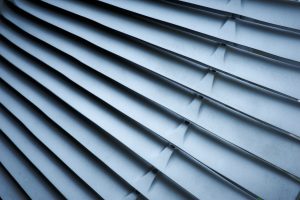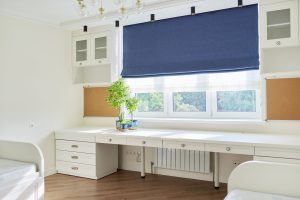Your patio is your home’s personal oasis, but without the right armour, it can fall prey to the whims of the weather. You’re looking to create a year-round sanctuary, and selecting the perfect awning is crucial to that transformation. You’ll need to understand the differences in awning materials and how they stand up to the elements.
Whether you’re leaning towards a retractable or a stationary model, you’ve got options that can withstand everything from scorching sun to icy gusts. With the right maintenance tips, you’ll extend the life of your awning, ensuring it remains your steadfast shield through every season.
And don’t overlook the latest innovative features that can add convenience and flair to your outdoor space. Let’s dive into the world of awnings and find the best match for your all-season needs.
Key Takeaways
– Synthetic fabrics like acrylic and polyester are ideal for waterproofing awnings
– Retractable awnings offer flexibility and protection, while stationary awnings provide robust protection and timeless charm
– High-quality, waterproof, UV-resistant fabric with high colour fastness rating should be used for awnings in extreme weather conditions
– Regular maintenance, including cleaning, tightening bolts, and professional inspections, can prolong the longevity of awnings.
Understanding Awning Materials
While choosing an awning for your patio, it’s crucial to understand the different materials available and their respective benefits to ensure year-round protection. You’re not just buying a shade provider; you’re investing in the aesthetic and functional enhancement of your outdoor space.
Fabric durability is paramount. High-quality awnings are often made of synthetic fabrics like acrylic or polyester that resist wear and tear. These materials are treated to withstand the elements, repelling water and blocking harmful UV rays. They’re tough enough to handle high winds and heavy rain, ensuring that your patio remains a cosy retreat even when the weather is less than perfect.
Colour retention is another factor you can’t overlook. The sun can be unrelenting, causing cheaper materials to fade swiftly. However, solution-dyed fabrics maintain their vibrancy over time, preserving the look of your outdoor haven. With advanced colour retention, your awning remains as striking and inviting as the day it was installed, becoming an integral part of your home’s appeal.
As you ponder your options, remember that the best awning is one that combines endurance with elegance, ensuring that your patio is shielded in style throughout the seasons.
Retractable Vs. Stationary Awnings
How do you choose between a retractable or stationary awning when considering the best weatherproofing option for your patio? It’s not just about function; awning aesthetics play a significant role in your decision.
A retractable awning offers a sleek, modern look and the convenience of adapting to the changing weather. Imagine being able to welcome the sun on a crisp morning and then, with a simple push of a button or turn of a crank, extend your awning for cool, shaded comfort during a hot afternoon.
In contrast, a stationary awning stands as a permanent fixture. With its enduring presence, it creates an inviting ambiance that can enhance the architectural appeal of your home. It’s a statement piece that says your patio is always ready for relaxation or entertainment, regardless of the weather.
When it comes to installation costs, the retractable option generally demands a higher initial investment. However, the long-term value it adds in terms of flexibility and protection for your patio furnishings can justify the expense. Stationary awnings, while potentially less costly upfront, don’t offer the same versatility but can still provide robust protection and a timeless charm that may complement your home’s aesthetic beautifully.
Awnings for Extreme Weather
You’ll need resilience in your awning choice to withstand the rigours of extreme weather, ensuring your patio remains a haven year-round. When considering awnings that offer superior climate resilience and wind resistance, look for features that blend durability with style. A well-chosen awning not only protects but also enhances the aesthetic appeal of your outdoor space.
Here are four key elements to look for:
- High-Quality Fabric: Opt for awning materials that are waterproof, UV-resistant, and have a high colour fastness rating to prevent fading. Fabrics like solution-dyed acrylic offer longevity and retain their beauty through harsh conditions.
- Robust Frames: Seek out frames made from materials such as powder-coated aluminium or stainless steel. These can endure high winds and resist corrosion, providing a sturdy support system for your awning.
- Wind Sensors: Awnings equipped with wind sensors automatically retract in strong winds, minimising the risk of damage. This smart feature is essential for maintaining wind resistance and prolonging the life of your awning.
- Professional Installation: Ensure your awning is installed by experts. Proper mounting and tension adjustment are critical to withstand extreme weather, preventing sagging and flapping which could lead to wear and tear.
Maintenance and Longevity Tips
To ensure your awning stays in top condition, you’ll need to keep up with regular maintenance and care. Establishing a cleaning schedule is crucial. Depending on your local climate and the frequency of use, you might need to clean the fabric and frame every few months to prevent mildew and rust, which can detract from the awning’s aesthetic appeal. Use mild soap and water for the fabric, and gently hose it down. Avoid abrasive cleaners that can damage the material and diminish its water-resistant qualities.
Check for any loose fittings or damage that could escalate if left unattended. Regular tightening of bolts and fasteners will keep your awning secure and looking sleek. Pay attention to the awning’s mechanics; retractable systems require occasional lubrication to maintain smooth operation.
Professional inspections can be invaluable, especially after extreme weather conditions. An expert eye can spot potential issues that mightn’t be immediately obvious. They’ll ensure the awning’s structure is sound and the fabric isn’t compromised, safeguarding your investment.
Innovative Awning Features
Modern awnings offer a range of innovative features designed to enhance your patio’s comfort and functionality throughout the year. These advancements transform simple shade structures into dynamic, adaptable elements of your outdoor living space. With a focus on technology and customization, you’ll find that the best awnings now include:
- Smart Sensors: Awnings equipped with smart sensors automatically adjust to weather conditions. They retract to prevent damage in high winds and extend when the sun’s intensity increases, ensuring optimal comfort without constant manual intervention.
- Integrated Lighting: For evenings on the patio, awnings with built-in LED lighting extend the hours you can enjoy your outdoor space. These energy-efficient lights offer a cosy ambiance and can be controlled remotely for your convenience.
- Customised Designs: Tailor your awning to fit the unique style of your home with customised designs. Select from a vast array of colours, patterns, and materials that complement your exterior décor and personal aesthetic.
- Heating Options: Even as the seasons change, stay warm with awnings featuring built-in heating systems. This feature allows you to savour crisp autumn evenings or early spring afternoons in complete comfort.
Frequently Asked Questions
How Do Zoning Laws and Neighborhood Regulations Impact the Installation of Patio Awnings?
You’ll need to check zoning permissions and adhere to neighbourhood aesthetics when installing your patio awning to ensure it meets local guidelines and complements the area’s visual harmony.
Can Awnings Be Safely Installed on All Types of Exterior Walls, Including Historic or Unconventional Buildings?
You’ll face installation challenges with awnings on historic or unique exteriors. Preservation concerns demand careful planning. Seek expert advice to maintain your building’s aesthetic while ensuring a safe, visually pleasing addition.
What Are the Environmental Impacts of Manufacturing and Disposing of Different Awning Materials?
Your awning’s material life cycle is like a novel, with chapters ranging from production to disposal. Consider eco-friendly fabrics and responsible disposal solutions to minimise environmental impacts and keep the planet as picturesque as your patio.
How Do Awnings Affect the Overall Energy Efficiency and Thermal Comfort Inside the Home?
Awnings improve your home’s energy efficiency by optimising shade positioning, which reduces cooling costs. They also enhance thermal comfort and complement interior lighting, creating an aesthetically pleasing ambiance with natural light.
Are There Any Tax Credits or Incentives for Installing Energy-Efficient or Eco-Friendly Awnings?
Yes, you may find tax credits or incentives for installing energy-efficient awnings, with potential installation rebates enhancing your home’s aesthetics while reducing your carbon footprint and utility bills. Check local regulations for specifics.
Conclusion
You’ve now become the envy of the neighbourhood with your all-season awning mastery. Imagine sipping lemonade under your retractable fortress in the summer sun, or watching snowflakes dance around your cosy, unyielding patio shelter.
With these maintenance gold nuggets, your awning will outlive the pyramids. So, flaunt your weather-defying paradise! Every thunderstorm will cower, and every sunbeam will bow to your outdoor sanctuary, thanks to the innovative wonders draping your personal oasis.
















